Since I’ve published Tilly’s Very Bad Day I figure I should update my painting guide for the Thirty Years War (1618-1648). This is the guide for the Generals throughout the war, of whatever nationality.
General guidelines
Nobility of the time fancied themselves in armour and often commissioned paintings of themselves wearing full armour. Typically blackened.
But in the field they’d wear what they liked. Just like the the Cavalry in the Thirty Years War. And just like the cavalry they probably wore less armour as the war progressed. Gustavus Adolphus never wore armour.
For each personality I’ve put the photos in order of what I think was likely in the field.
What the figure manufacturers show
I thought I’d start with a couple of photos of miniatures. They should how Khurasan Miniatures thinks generals should be painted.

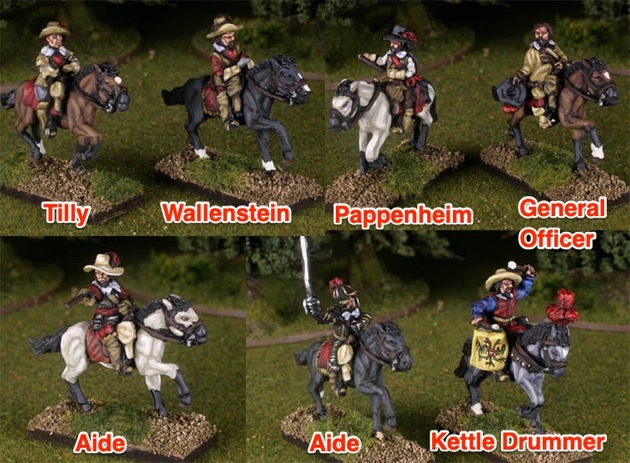
Pro-Habsburg Personalities
Johann Tserclaes, Count of Tilly (Catholic League)
Tilly was still a field commander at the age of 72. So the white hair and beard were the most distinctive features. And the red sash. Blackened armour, but everybody had blackened armour. In paintings he was fond of the old fashioned white neck ruff but every day he probably adopted the fashionable wide white collar that everybody else wore.
Marshal Grammont saw Tilly at the head of his army (Quoted in Harts, 1759, cited by Spring, 2017):
Mounted on a small white Croatian pad [horse] in a green sati doublet with slashed sleeves and trousers of the same stuff, a little cocked hat with a red ostrich plume in it … a bet round his waist of two inches breadth, to which hung his fighting sword with a single pistol only in one of his holsters

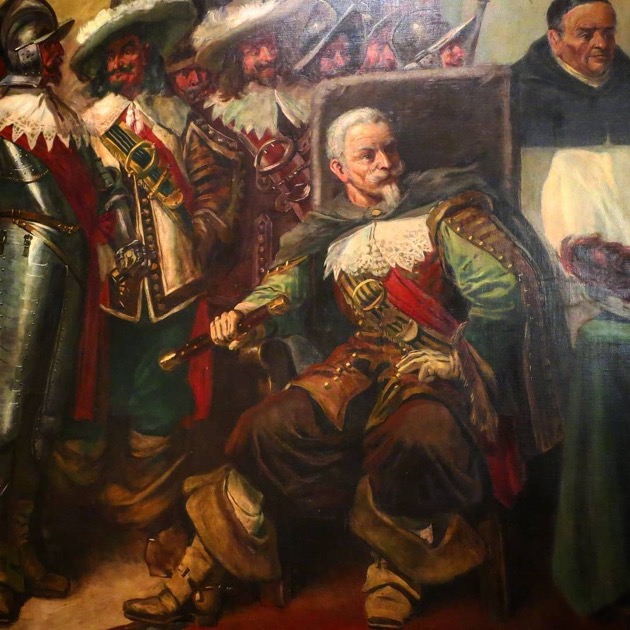


Cardinal-Infante Ferdinand (Spanish)
The Cardinal-Infante Ferdinand was a priest. Not that you can tell from the paintings.
The most famous painting of the Cardinal-Infante is probably his meeting with King Ferdinand below. But I’ve started with the painting by Adam Frans van der Meulen because it seems to match the costume colours of the “meeting” painting. He was blond. Buff coat. Yellow suit. White felt hat with red plume or black felt hat with white plume. And maybe he liked bay horses.
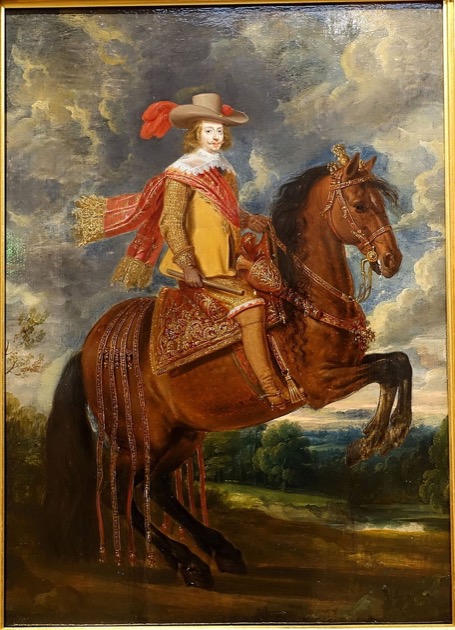

If he wore full armour, it would have been blackened. And don’t forget the red sash.


Ambrogio Spinola (Spanish)
Ambrogio Spinola captured a couple of cities – Breda and Jülich. And these moments were made famous in paintings. He has blackened armour and a red sash – there is a real pattern there. Perhaps a white or bay horse.

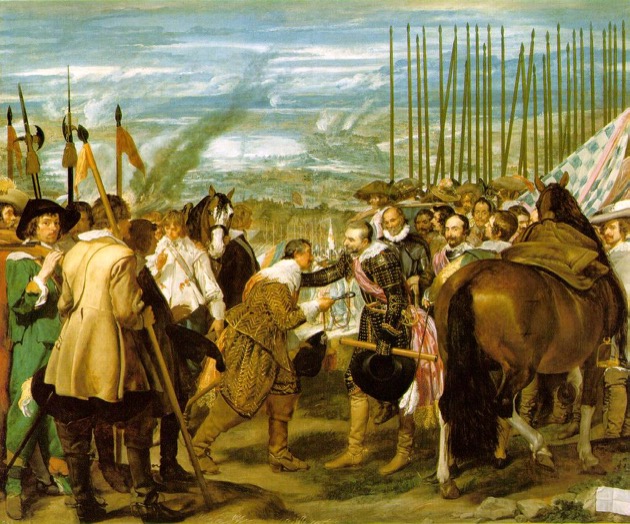
Albrecht Wenzel Eusebius von Wallenstein (Holy Roman Empire)
Well, I reckon Wallenstein was a rather unpleasant looking man – not that you can painting that on a 15mm figure. Buff coat or blackened armour. Red sash. Marshals baton – clearly he was very proud of it. If worn, blackened armour. bay horse or perhaps chestnut.



Gottfried Heinrich Graf zu Pappenheim (Holy Roman Empire)
Pappenheim was a heavy cavalry general. He probably wore armour. Blackened like his men’s.

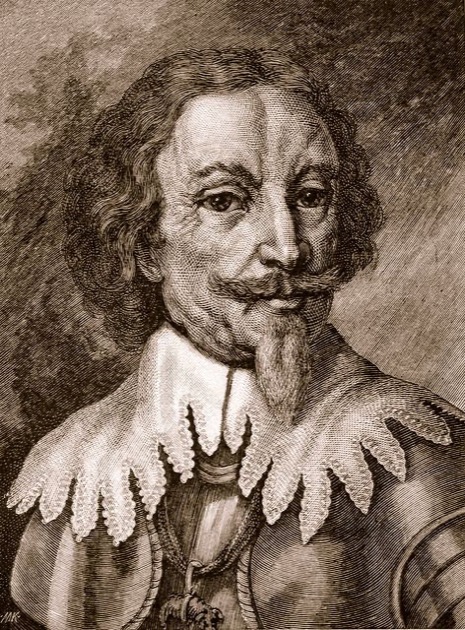
I would have put the following painting higher except for the bright steel armour. A German general would only wear blackened armour.
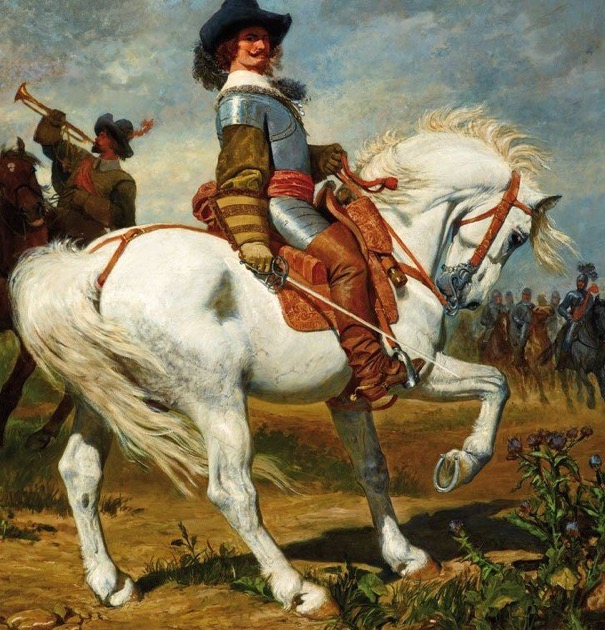
Ottavio Piccolomini (Spain; Holy Roman Empire)
Buff coat over blackened breast plate. Red sash. Red trousers and white shirt or jacket. White horse.

The following painting shows Piccolomini with a large red cloak, perhaps Croatian.


Anti-Habsburg Personalities
Gustavus Adolphus (Sweden)


Louis II de Bourbon, Prince of Condé (France)
Prior to his father’s death in 1646, he was styled the Duc d’Enghien. For his military prowess he was known as le Grand Condé.
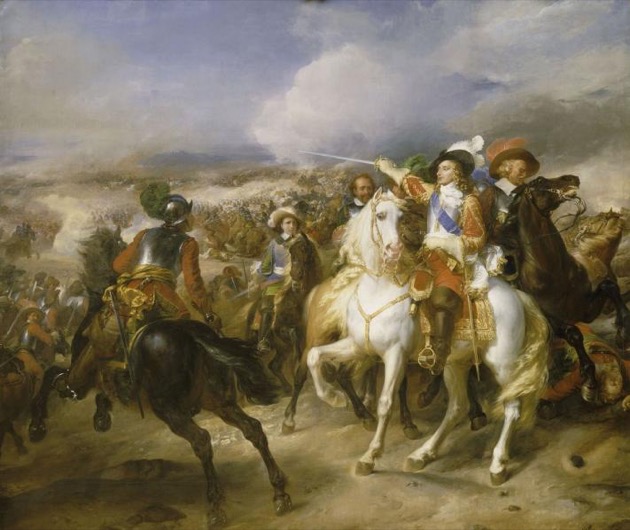

Peter Ernst, count of Mansfeld, or simply Ernst von Mansfeld (Various Protestant powers)

Bernard of Saxe-Weimar (Various Protest powers; France)


Where to get Tilly’s Very Bad Day
Tilly’s Very Bad Day is available for Download (PDF).
References
Harte, W. (1759). The History of the Life of Gustavus Adolphus, Vol 1. London: G. Hawkins. p.lvi.
Spring, L. (2017). The Bavarian Army During the thirty Years War 1618-1648: The Backbone of the Catholic League. Century of the Soldier 1618-1721 [No. 15]. Helion & Company.


Steven
Another very useful article!
It’s interesting to read that Spanish generals favoured blackened armour despite the tendency for Spaniards to like bright, burnished, armour.
Richard
It is interesting. I will need to recheck the thing about burnished armour.
Where do you get the idea about a spanish tendency of “liking” “bright, burnished, armour”? None of the sources I consulted corroborate such a trend.
Pablo,
Unfortunately this factoid dates from before I was careful about references. I’ll have to check my sources again.
What sources are you referring to?
What’s the best ‘colour’ for painting blackened armour?
Richard
Painting black is tricky at the best of times. I tend to do black as black with a grey highlight.
For blackened armour, I think it is a bit similar. Perhaps use gun metal as the highlight. Or grey and then paint over with gloss varnish.
Roland Davis, who painted most of my TYW kit, thought painting all the German Cuirassiers in blackened armour would look too dull. So he painted a portion of them in blackened armour and a portion with burnished armour for variety. Artistic license I guess.
Hi Richard, well, late to the fray, as ever and for what it’s worth, as I’m no great painter, my take on black armour is that I find it best to treat it as a variant on the method I use for all steel armour, that is: black undercoat, heavy white dry brush, wash in dilute black ink, very light dry brush in whatever colour you use for steel (I use Miniature Paints almost exclusively, so that would be MP96 ‘Chainmail’). For black armour I dry brush the white rather more lightly, dilute the black ink even more (maybe) and leave out the steel dry brush altogether. It seems to work OK.